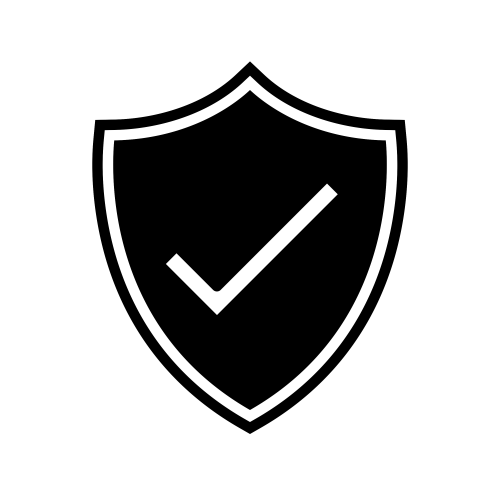IT Essentials for Modern Workforces powered by Microsoft 365
Ricoh’s IT Health Check service provides a thorough evaluation of an organization’s existing technology infrastructure, including software, hardware, and network systems. This assessment focuses on key areas to identify strengths, weaknesses, and opportunities for improvement. Upon completion, the findings and recommendations are compiled into a Visibility, Insight, and Path (VIP) Report, offering clear guidance for optimizing IT performance.

IT Health Check will analyze the following areas of infrastructure:
End User Computing
Assess the current desktop computing environment, including laptops, desktops, thin clients, kiosks, Chromebooks, operating systems, and mobile devices and make recommendations for modernization and consolidation.
Storage and Backups
Assess the current use of Storage (DAS), Network Attached Storage (NAS) and Storage Area Network (SAN), tape backup and off-site storage strategies.
Network
Assess the current network infrastructure, including all data switches, routers, appliances, WAN infrastructure, wireless mesh network and recommendations for appropriate improvements.
Business Continuity and Disaster Recovery
Assess the current disaster recovery initiatives and make recommendations for a more comprehensive disaster recovery program.
Servers and Server-based Applications
Assess the current servers being utilized, including virtual servers, domain controllers, email servers, database and application servers and make maintenance and management of device life-cycle recommendations.
Printers
Assess the current fleet of printers, copiers, multi- function printers, scanners, fax machines, ink-jet and large-format printer/plotters.
Fast and Simple IT Network Issue and Risk Identification
The IT Health Check Program is designed to review your technology environment and existing technology uses, including software, hardware, and network infrastructure in order to identify potential vulnerabilities that could leave your organization at risk of interruption. Depending on what we uncover, we will also make suggestions on ways to prevent unauthorized access, augment security systems, better lock down sensitive data, become more mobile and, in general, get more out of your existing technology infrastructure.

What we analyze:
- End User Computing
- Network Infrastructure
- Servers and Server-Based Applications
- Storage and Backups
- Business Continuity and Disaster Recovery
- Printers and Scanners

What you receive back:
Following the review, you will receive a Visibility, Insight and Path (VIP) Report that contains the following details:
- Network device inventory
- Network Risk Score
- Analysis of potential network issues
- Identification of potential security gaps
- Recommendations for resolution
- 100% remote service delivery
- No software installed
- No agents or probes living on your network
- Low-cost engagement
- Quickly identify network issues and risk exposure
- A detailed action plan for remediation of network issues

Organizational Service Requirements
In order for Ricoh to deliver the IT Health Check service, the requesting organization must:
1. Provide Ricoh remote access to network and server infrastructure
2. Allow Ricoh to utilize one or more software tools that require domain administrator authority
VIP Report Deliverable
This 6-8 page Executive Summary will provide you with an overview of the devices on the network along with a network Risk Score and analysis of each potential issue we uncover. We will review this document with you, discuss the findings, in detail, and answer any questions you may have.
Examples of findings across the various categories may include:
In addition to identification of potential vulnerability, the VIP report will include insight by way of remediation recommendations, as well as broad vision input in terms of a future roadmap that may include long term partnership opportunities that may further support your defined business goals and help drive results.
IT Managed Cloud Services
Empower your employees to work faster and smarter from anywhere.
Ricoh’s Hosted Desktop Service is a fully managed IT solution designed specifically to address the unique challenges and intricate nuances of today’s hybrid work environments. Use it to access the files and applications your business needs — without the burden of managing hardware, software, backups, security and networks — directly from your desktop, laptop or approved personal mobile device.

Seamless upgrades
Replacing outdated IT systems and end-of-life (EOL) software is disruptive and expensive. Now you can upgrade technologies without compromising your budget or the way you work. Connect to our secure data center and access all of your business applications using existing workstations and devices.
Advanced security
We offer automatic disaster recovery and data backup with built-in redundancies. Ricoh stores your information in SSAE-16 compliant data centers, using multiple physical, technical and administrative safeguards to control access and minimize risk. Plus, we can transparently switch you to a virtual network clone to ensure seamless business continuity and always-on reliability.
Fast, responsive, on-going support
Focus on what you do best. We’ll do the same. With an experienced team of help desk and technical support professionals, we have the expertise to monitor and manage your Hosted Desktop around-the-clock — and proactively identify and remedy problems before they impact your network, activities and relationships
Scalability & customization
Whether you have 10 employees in one office, or grow to 500 employees and 10 offices, expansion is effortless and cost effective without infrastructure to manage. Select from hundreds of applications, including document management, time and billing, and Microsoft 365. Best of all, users have secured access to their desktop applications in the office or at home.
IT Managed Security Service
A Layered Approach Helps SMBs Protect Against Emerging Cyber Threats
Security posture is improved with a comprehensive strategy that includes managed services and cyber insurance.

Preparing for potential security threats is now an everyday part of business.
In light of the damages that could result from a breach or attack, a security strategy is a must.
While most small and midsize businesses (SMBs) have the basics in place — including antivirus, spam filtering, and malware protection — most do not have a comprehensive security approach.
This is problematic. The attack landscape is changing rapidly. New threats, including those surfacing from the dark web and from within the supply chain, are challenging for SMBs to detect and address, especially for those with limited staffing.
A recent IDG survey among 121 IT decision-makers at companies with up to 1,000 employees examined their IT security strategies. The results reveal why a layered approach, including the use of managed services, helps improve companies’ overall security posture and readiness for emerging threats.
Preparing for potential security threats is now an everyday part of business. In light of the damages that could result from a breach or attack, a security strategy is a must. While most small and midsize businesses (SMBs) have
Security Strategies Currently Leveraged by SMBs
78%
Antivirus and spam filtering
75%
Basic malware protection
63%
Advanced malware/ransomware/intrusion detection
56%
Rollback recovery to previously known healthy state
56%
Cyber liability insurance
55%
Offline device protection
52%
Dark web monitoring
47%
Third-party vendor breach alerts
Discover how to combine the best security solutions with managed services to guard against threats, monitor suspicious activity, and insure the business.
